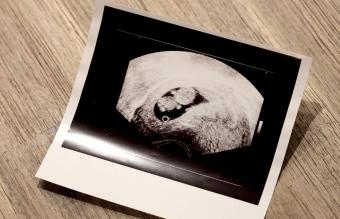
Starting early in pregnancy, the normal increase in your hormones changes the appearance and other qualities of your cervical mucus. Note that infection in your cervix or vagina and other factors can modify the look and feel of the mucus you see. Learn what to know about the color and consistency of mucus discharge while pregnant.
Normal Cervical Mucus in Pregnancy
Soon after you get pregnant, the amount, color, and consistency of your cervical mucus begins to change. This mucus is the main source of the increased amount of vaginal discharge you might notice in your early pregnancy. An increase in secretions from your vaginal lining also contribute to the amount and appearance of your discharge.
The Characteristics of the Mucus
Early in your pregnancy, rising levels of your estrogen and progesterone hormones exert their known specific effects on cervical mucus, as summarized in Principles and Practices of Endocrinology and Metabolism, (page 931). The type of vaginal discharge you see depends on which hormone effects predominate in your cervical mucus.
- Progesterone effects: An odorless, heavier, thick, whitish, or yellowish mucus discharge might be one of your earliest signs you are pregnant. This thick, sticky, or gummy mucus is caused by progesterone. It goes on to form the mucus plug in your cervical canal, which will last until close to the onset of your labor. When does the mucus plug form? When you first become pregnant.
- Estrogen effects: As your pregnancy progresses during the first trimester, you might have a heavier mucus discharge. Estrogen increases the amount of mucus the inner lining of your cervix (endocervix) makes. The effect of estrogen also makes your cervical mucus feel wet and slippery, and it can look clear, milky white, creamy, or yellowish.
Leukorrhea
Some women have a large amount of mucus starting in the first trimester. Known as leukorrhea, your mucus will be heavier, more watery or runny, and look white or creamy. This type of abundant mucus during pregnancy:
- Is a common effect of estrogen on cervical mucus in early pregnancy
- Occurs when estrogen causes the layer of cells lining the endocervical canal to turn outward partially to face your vagina (ectropion). In this position, the cells are stimulated to make a greater quantity of mucus.
- Can soak your underwear and make you feel wet all the time
The color of your mucus could also look pinkish, brownish, or reddish. This is because the exposed endocervical tissue can bleed easily. Talk to your doctor if you are concerned about the amount of your mucus or its color.
The Effect of Implantation Bleeding
Pinkish, brownish, or reddish mucus at about one to two weeks after ovulation might also be due to implantation bleeding, which is uncommon but normal. Discuss this with you doctor if it continues past the time of your missed period. Also consult your doctor if you notice bright red blood in your mucus, especially if you also have pelvic pain.
Other Types of Cervical Mucus
Other factors, such as inflammation or infection in your cervix, can modify the normal mucus in early pregnancy. A vaginal infection can also change your mucus discharge.
If you have signs or symptoms of a cervical or vaginal infection, don't use over-the-counter medicines or home remedies before a discussion with your doctor.
Cervical Infection
In the presence of a cervical sexually transmitted infection, such as gonorrhea or chlamydia in early pregnancy, the color of your mucus might be a murky or deeper yellow. The consistency can also be thicker or more jelly-like than the normal mucus of pregnancy. In addition to a yellow mucus discharge early pregnancy that could be the sign of an infection, you might notice:
- That you have an unpleasant odor
- There is vulvar and vaginal itching, burning, or irritation in your vagina and external tissues
- Cramps or pain in your pelvic area
- Discomfort in your vagina or pelvis during intercourse
Vaginal Infection
A vaginal infection, such as yeast, mixed with the cervical mucus will also affect the kind of discharge you see. Yeast often causes a cottage-cheese-like discharge, and there is usually vaginal and vulvar itching and burning.
Vaginal infections with organisms, such as trichomonas or bacteria, can cause a thin watery, murky white, yellowish, or greenish discharge with a fishy odor. Intercourse might be uncomfortable because of your vaginal symptoms.
Discuss With Your Doctor
It is normal for your mucus discharge to change early in your pregnancy. Watch for signs and symptoms that might indicate you have an infection or other problems. Call or make and appointment to see your doctor if you have any concerns about any mucus during your pregnancy.







